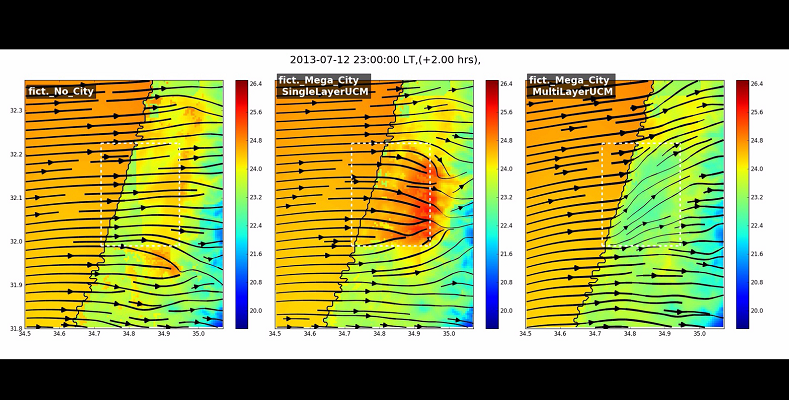Focusing on meteorological modeling, the department has developed statistical methods for forecasting surface winds, both temporally and spatially (e.g. analogue, spatial distribution, spectral and vector interpolation-based) with a special focus on urban and complex terrain areas.
3D-dynamic mesoscale models such as WRF (and its extension WRF-Chem) and MM5, have been adapted and improved to provide more accurate estimates suitable for T&D, air quality, aviation, hydrological, agricultural and renewable energy applications.
Both statistical and dynamic models can use observations through advanced data assimilation techniques (e.g., the ensemble Kalman filter).
Forecasts of uncertainty as well as probabilistic predictions are made using ensemble techniques. Statistical downscaling methods have been developed, with an emphasis on wind and precipitation, including seasonal precipitation forecasts.
Extensive databases from global and mesoscale re-analyses, and from direct and satellite observations, are used to investigate the climatology of atmospheric variables and their environmental impact on coupled applications (visibility, radiation attenuation, etc.).
The OpenFOAM framework is utilized to develop specific solvers and to perform large eddy simulation (LES) and Reynolds averaging (RANS).
IIBR researchers also employ a wide variety of solvers such as PALM, FLUENT, a variety of OpenFoam solvers and WRF for the various atmospheric conditions and scales of interest.
All modeling capabilities are verified and calibrated against real observations.


Video: prediction of the WRF meso-meteorological model using different urban parametrizations for the Gush-Dan area
Additional links:
Atmospheric Transport and Dispersion Modeling
Risk Assessment
Environmental Wind Tunnel Laboratory